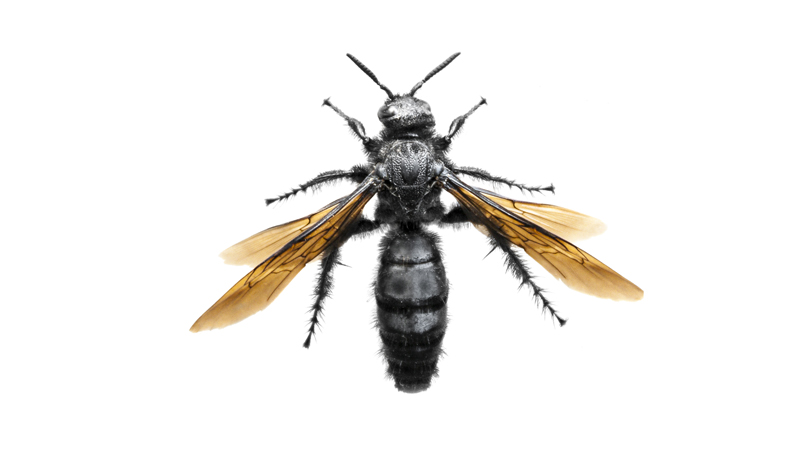Tarantula Hawk: These Wasps Lay Their Eggs in the Backs of Tarantulas

By Matt Dolkas,
Senior Manager, Marketing
October 9, 2024
California’s tarantula hawk is one of the greatest monsters of the insect world. While these spider wasps might sound like something dreamed up by a Hollywood horror writer, the unfortunate reality is that this parasitoid wasp is no science fiction invention.
The tarantula hawk’s reproductive rituals are one of the most terrifying natural history stories west of the Mississippi River. As Halloween creeps closer and this wasp’s egg-laying season begins, nature serves up a real-life horror story that makes even the movie “Alien”—with its infamously juicy human-host-eggmorphing gore—look like a mere childish cartoon.
You’re gonna want to sit down for this one:

The Second Most Painful Insect in the World
With its striking metallic blue-black body and vibrant orange wings, the tarantula hawk is one of California’s most formidable flying insects. Boasting one of the most painful insect stings in the world, second only to the South American bullet ant, it’s a species you might like to learn how to quickly spot and identify.
American entomologist Justin Schmidt developed the Pain Scale for Stinging Insects, with the help of variably willing and unwitting human test subjects. In his assessment, he characterized the tarantula hawk’s sting as “instantaneous, electrifying, and totally debilitating.” He also suggested that if stung, the only response is to “lay down and scream.”
Thankfully, tarantula hawks are fairly docile unless provoked and, lucky for us, its potent sting is intended for a different type of horror.
Love is in the Air
In the mating season (August to October), males perch atop tall plants waiting for passing females before performing elaborate aerial displays with intricate flight patterns and intense bursts of wing buzzing. It’s like the Saturday Night Fever of the insect world and the beginning, for many nearby tarantulas, of a long and painful end.
After mating, a female tarantula hawk begins her solitary journey to locate a suitable host for her offspring, typically a tarantula. Yes, I said “host.” The female tarantula hawk has one goal: to find a tarantula and turn it into a living nursery for her offspring.
This is where their story goes dark.
The Stuff of Nightmares
Though they might appear to be menacing, tarantula spiders are actually quite shy creatures. They prefer to avoid confrontation and their venom is generally less potent than that of a typical bee sting, making them far less dangerous than their fearsome appearance might suggest. Think of them like the gentle giants of the arachnoid world, an innocence that makes their fate all the more tragic.
When a female tarantula hawk spots her prey, she launches into a ruthless attack. With lightning-quick movements, she delivers a precisely aimed sting, injecting her potent venom to paralyze the tarantula almost instantaneously. The spider, despite its size and strength, is rendered helpless in seconds and, while not killed, is rendered immobile.
With her victim secured, the female tarantula hawk victoriously drags the paralyzed spider to a nearby burrow. There, she lays a single egg on the tarantula’s abdomen. When the egg hatches three or four days later, the larva emerges to begin consuming the still…living…spider. Only later does the young wasp consume the heart and nervous system tissues, finally killing the tarantula and ending this horrific cycle of life.
Not Just a Pretty Face (With Terrifying Mandibles)
Despite their ruthlessness, tarantula hawks are important pollinators in our local ecosystems. When they’re not busy planning the demise of tarantulas, they can be found sipping nectar from flowers, helping to keep California’s wildlands blooming and beautiful.
Tarantula hawks, like many of California’s unique species, rely on undisturbed natural habitats to thrive. By protecting natural lands and preserving our local ecosystems, we ensure that these fascinating creatures – and the complex web of life they’re part of – continue to exist.
So this Halloween, as you’re carving pumpkins and hanging fake spider webs, take a moment to appreciate the real-life drama unfolding in California’s wild spaces. The tale of the tarantula hawk and its unfortunate victims reminds us that sometimes, reality is stranger than fiction.